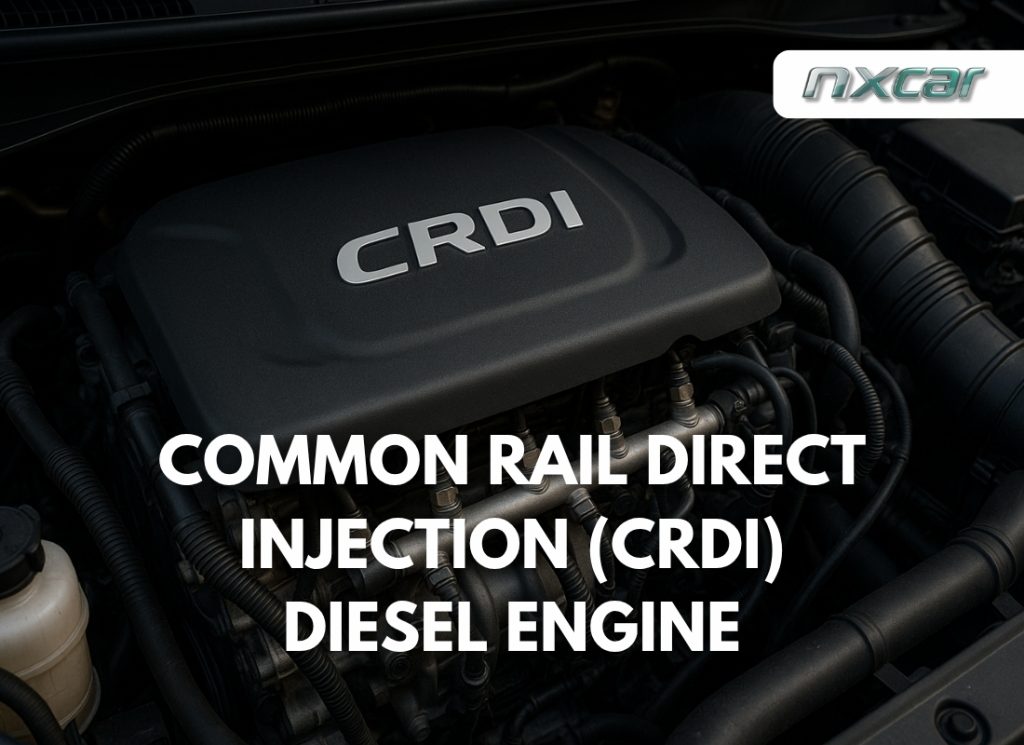In a world demanding relentless efficiency and cleaner combustion, traditional diesel engines are falling short—guzzling fuel, emitting excessive particulates, and wheezing under the pressure of modern performance standards. The consequences? Strained engines, mounting fuel costs, and a carbon footprint that refuses to shrink. The outdated mechanical injection systems once hailed for their simplicity now choke progress, unable to meet the escalating demands of torque-hungry drivers and ever-tightening emission regulations.
This is not merely an inconvenience—it’s a crisis for industries that depend on diesel power. Fleet operators, agricultural machinery, and performance enthusiasts alike are grappling with engines that lack responsiveness, precision, and sustainability. The inefficiency bleeds into profits and planet alike. As the pressure mounts, so does the urgency to find a solution that delivers power, precision, and environmental accountability without compromise.
Enter the Common Rail Direct Injection (CRDI) Diesel Engine—a revolution in diesel technology. This advanced system redefines combustion dynamics, delivering ultra-fine atomization of fuel at staggeringly high pressures through electronically controlled injectors. The result? Remarkably improved fuel efficiency, enhanced throttle response, and a dramatic reduction in harmful emissions. By divorcing fuel delivery from crankshaft timing, the Common Rail Direct Injection (CRDI) Diesel Engine achieves a level of control and optimization previously unimaginable. It’s not just an upgrade—it’s a paradigm shift that promises to extend engine life, maximize performance, and meet the strictest global emission norms with surgical precision.
What is CRDI Diesel Engine?
A Common Rail Direct Injection (CRDI) Diesel Engine is a sophisticated propulsion system that elevates diesel combustion to an entirely new echelon of precision and performance. Unlike conventional diesel engines, where fuel injection is mechanically timed and pressure varies with engine speed, the Common Rail Direct Injection (CRDI) Diesel Engine employs a high-pressure fuel rail—commonly referred to as the “common rail”—to deliver atomized fuel to electronically controlled injectors.
This closed-loop system allows fuel to be injected at extremely high pressures—often exceeding 1,500 bar—regardless of engine speed. The result is a finer spray pattern, more thorough combustion, and significantly reduced emissions. The control unit, or ECU, governs injection timing and duration with microsecond accuracy, enabling multiple injections per cycle. This enhances torque delivery, curbs knocking, and improves cold-start behavior.
Another notable advantage of the Common Rail Direct Injection (CRDI) Diesel Engine is its superior fuel economy and smoother engine acoustics. It minimizes energy loss and maximizes power output by optimizing combustion events across a wide operating range. This intelligent approach to diesel propulsion not only meets stringent global emission norms but also offers an exhilarating driving experience with minimal compromise.
How Does it Work?
The Common Rail Direct Injection (CRDI) Diesel Engine operates with an ingenious fusion of high-pressure fuel delivery and intelligent electronic control. At its core lies a shared pressurized rail system—replacing the outdated mechanical pump-driven approach—designed to maintain consistent fuel pressure regardless of engine speed or load.
Key Components and Their Roles:
- High-Pressure Fuel Pump
Pressurizes diesel fuel to extreme levels—often exceeding 1,800 bar—before routing it into the common rail. - Common Rail
Acts as a reservoir that maintains constant fuel pressure. This enables rapid, precise delivery to each injector, independent of engine revolutions. - Electronic Control Unit (ECU)
Serves as the brain of the Common Rail Direct Injection (CRDI) Diesel Engine. It meticulously regulates injection timing, quantity, and pressure based on real-time inputs such as engine load, throttle position, air temperature, and RPM. - Solenoid or Piezoelectric Injectors
These advanced injectors release fuel in ultra-fine sprays, ensuring optimal atomization for cleaner and more complete combustion.
Working Cycle Breakdown:
- Fuel Delivery
The high-pressure pump sends fuel into the rail where it remains under consistent pressure. - Injection Timing
The ECU triggers injectors multiple times per combustion cycle—typically pre-injection, main injection, and post-injection—for smoother power delivery and lower noise. - Combustion
Micro-controlled fuel bursts ignite precisely when and where needed, significantly enhancing thermal efficiency.
The beauty of a Common Rail Direct Injection (CRDI) Diesel Engine lies in its flexibility. Unlike older systems, it separates pressure generation from injection timing, offering unparalleled control. This translates into better performance, reduced emissions, and a noticeably quieter engine operation.
Also Read – 3 Cylinder vs 4 Cylinder Engine: Which Is Best for You? A Complete Comparison
Advantages of CRDI Engine
The Common Rail Direct Injection (CRDI) Diesel Engine isn’t just an evolution—it’s a reinvention of diesel propulsion. By decoupling pressure generation from injection timing and enabling electronically modulated control, it delivers an array of tangible benefits across performance, efficiency, and environmental metrics.
1. Superior Fuel Efficiency
- Precision Injection: Fuel is metered and injected with pinpoint accuracy, minimizing wastage.
- Multiple Injection Events: Pre-, main-, and post-injection cycles optimize combustion phases, reducing fuel consumption under varied loads.
2. Enhanced Engine Performance
- High Power Output: Uniform and ultra-fine atomization of fuel improves combustion, resulting in stronger torque and horsepower delivery.
- Consistent Power Curve: The engine maintains robust performance across low and high RPM ranges.
3. Reduced Emissions
- Cleaner Combustion: The electronically controlled injectors in a Common Rail Direct Injection (CRDI) Diesel Engine promote complete fuel burn, significantly cutting down NOx, hydrocarbons, and particulate matter.
- Eco-Friendly Compliance: Meets or exceeds stringent Euro and Bharat Stage emission standards.
4. Quieter Operation
- Multiple, Softer Injections: Instead of a single harsh fuel burst, CRDI engines employ staggered injections, dampening combustion noise.
- Smoother Idling: Reduced vibration and acoustic harshness offer a refined driving experience.
5. Longer Engine Life
- Lower Mechanical Stress: Reduced knocking and optimized pressure distribution decrease internal wear.
- Thermal Efficiency: Controlled heat dispersion helps maintain consistent operating temperatures.
In summary, the Common Rail Direct Injection (CRDI) Diesel Engine stands as a paragon of modern diesel engineering—combining performance, precision, and sustainability in a single, intelligent system.
Also Read – How to Choose Best Engine Oil for Used Car
Disadvantages of CRDI Engine
While the Common Rail Direct Injection (CRDI) Diesel Engine revolutionizes diesel performance, it is not without its share of trade-offs. Beneath the veneer of sophistication lie complexities that can pose challenges, particularly in cost, maintenance, and sensitivity to fuel quality.
1. High Initial Cost
- Advanced Components: The use of high-pressure pumps, precision injectors, and complex ECUs drives up manufacturing costs.
- Expensive Integration: Incorporating a Common Rail Direct Injection (CRDI) Diesel Engine into a vehicle platform requires additional engineering and calibration efforts.
2. Maintenance Complexity
- Specialized Servicing: CRDI systems demand diagnostic tools and expert technicians. A basic garage cannot easily service these engines.
- Component Sensitivity: Injectors and pressure sensors are delicate and prone to damage if mishandled.
3. Fuel Quality Dependency
- Susceptibility to Contamination: The system operates under ultra-high pressure; even microscopic impurities in diesel can clog injectors or damage the pump.
- Poor Fuel Tolerance: Low-grade or adulterated diesel can degrade engine performance and accelerate wear.
4. Repair Costs
- High Replacement Cost: CRDI components—especially piezoelectric injectors and fuel pumps—are expensive to replace.
- Limited DIY Potential: Unlike older diesel systems, the Common Rail Direct Injection (CRDI) Diesel Engine offers little room for home repairs or roadside fixes.
5. Complex Diagnostics
- ECU Reliance: A malfunctioning control unit can impair the entire fuel system, often requiring electronic recalibration or replacement.
- Difficult Troubleshooting: Pinpointing issues requires advanced diagnostic scans, often unavailable in rural or remote service stations.
Despite its undeniable advantages, the Common Rail Direct Injection (CRDI) Diesel Engine demands careful maintenance and quality fuel to sustain peak performance—factors that can be limiting in certain regions or use cases.
Conclusion
The Common Rail Direct Injection (CRDI) Diesel Engine stands as a defining leap in modern automotive engineering. By merging high-pressure fuel delivery with intelligent electronic control, it has transformed the diesel powertrain into a refined, efficient, and eco-conscious performer. Its ability to deliver precise fuel atomization ensures optimal combustion, translating into exceptional torque, smoother drivability, and remarkable fuel economy.
However, this technological prowess comes with its nuances—higher maintenance demands and sensitivity to fuel quality require careful upkeep. Despite these challenges, the Common Rail Direct Injection (CRDI) Diesel Engine continues to be the preferred choice for those seeking a balance of power and sustainability. As emission norms tighten and efficiency expectations rise, its relevance only deepens. For drivers who value long-term reliability, dynamic performance, and cutting-edge innovation, this engine remains a true benchmark in diesel technology.




